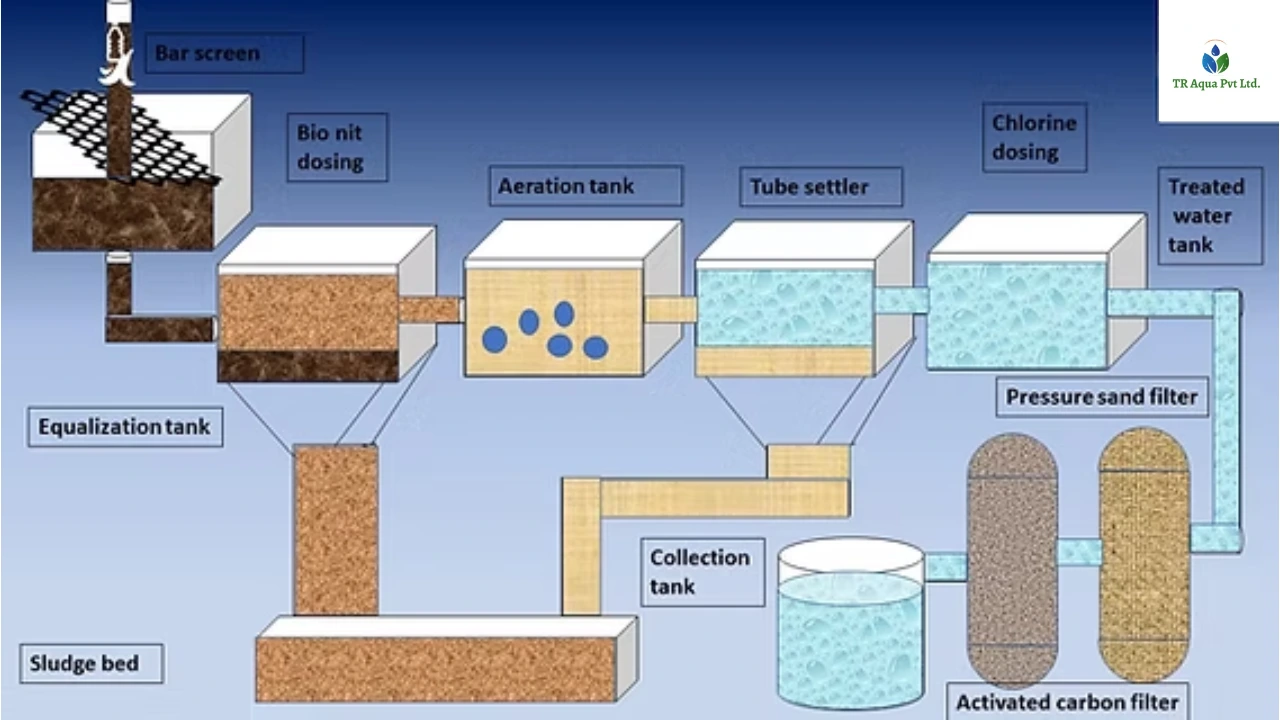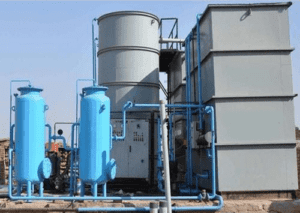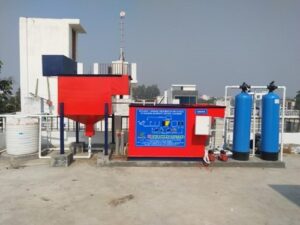Wastewater is treated to help remove toxins, bacteria, and other contaminants. It is treated in multiple stages at treatment facilities before being released back into the environment. The ultimate goal of sewage treatment is to produce effluent that can either be reused in a positive way or released into the environment, with the least amount of water contamination feasible. Sewage treatment plants (STPs) play a crucial role in keeping our water sources clean by treating wastewater before it’s released back into the environment. Understanding how they work can help us appreciate the importance of water conservation and proper waste management. Let’s break down the process step-by-step and explain it with the help of a diagram!
Also Read Us: Sewage Treatment Plant Manufacturer in India
What is Sewage Treatment?
Sewage treatment is the process of removing contaminants from wastewater, which includes household sewage, industrial effluents, and runoff. The objective is to reduce pollutants and treat the water to make it safe for discharge into natural water bodies, or even to reuse for non-potable purposes like irrigation.
Main Stages of Sewage Treatment
Sewage treatment is typically carried out in three primary stages: Primary, Secondary, and Tertiary Treatment. Let’s explore each stage:
Primary Treatment: Movement of sludge
The first step is to make sure that the wastewater is well drained into the sewage treatment plant. No matter where it comes from, it must follow the same route. Wastewater is sent to the sewer and sent to the next sewage treatment facility via an underground pipe.
- Screening: The wastewater enters the treatment plant, and the first step is screening to remove large debris like plastics, sticks, and other solid materials.
- Settling Tank (Primary Sedimentation): The water then flows into large settling tanks. Here, the heavy solids (such as sand and silt) sink to the bottom, while oil and grease float to the top. These are removed separately.
Key Result: Large solid materials are separated, and a part of the pollution is reduced. However, most of the contaminants remain in the water.
2. Secondary Treatment: Biological Treatment
In the secondary treatment stage, microorganisms are used to break down organic contaminants in the water. This is the most important part of sewage treatment.
- Aeration Tanks: The water is pumped into aeration tanks, where oxygen is bubbled into the water to encourage the growth of beneficial bacteria. These bacteria consume the organic pollutants (such as food waste and human waste) and convert them into simpler substances.
- Secondary Sedimentation: After aeration, the water is allowed to settle again. The bacterial biomass (known as activated sludge) that has been consuming pollutants settles to the bottom, where it can be removed.
Key Result: Most of the organic pollutants are removed, and the water is significantly cleaner.
3. Tertiary Treatment: Polishing the Water
This is the final stage of treatment, where any remaining contaminants are removed using advanced methods to ensure the water is safe for discharge or reuse.
The exact tertiary wastewater treatment required depends on the type and sensitivity of the water received. For example, bathing and mussel water usually require disinfection. However, phosphorus and nitrates (that is, nutrients in wastewater) must also be removed to protect waters that suffer from eutrophication (nutrient abundance).
- Filtration: The treated water may pass through sand filters to remove any remaining suspended particles.
- Chemical Treatment: Some plants add chemicals like chlorine or ozone to disinfect the water and kill any remaining bacteria or viruses.
- Advanced Processes: In some cases, advanced treatment methods like reverse osmosis or UV treatment are used to further purify the water.
Key Result: The water is now clean enough to be safely returned to the environment or used for non-potable purposes.
Flowchart Sewage Treatment Plant Process

Importance of Sewage Treatment Plants
- Protects Water Quality: Sewage treatment ensures that harmful chemicals, bacteria, and waste do not pollute natural water bodies, keeping them safe for both humans and wildlife.
- Conserves Resources: Treated wastewater can be reused for agricultural or industrial purposes, helping to conserve fresh water resources.
- Promotes Public Health: Effective sewage treatment reduces the risk of waterborne diseases and ensures clean drinking water.
TRAqua’s Commitment to Sustainable Water Treatment
At TR Aqua Pvt. Ltd., we are committed to providing advanced, efficient, and environmentally-friendly sewage treatment solutions. Our innovative systems help reduce pollution, conserve water, and ensure public health by delivering high-quality treated water. We specialize in designing and implementing state-of-the-art sewage treatment plants that are tailored to meet the unique needs of each community or industry. Our years of experience and professional know-how have given the sewage treatment plants business a solid foothold. Due to their unique design and use of components that have been authorised by the industry, the systems we provide to our clients enjoy widespread trust.
Conclusion
Sewage treatment plants(STP) are essential to maintaining water quality and public health. Through a series of mechanical, biological, and chemical processes, these plants ensure that wastewater is cleaned effectively and safely before being returned to the environment. At TR Aqua, we’re dedicated to making sure that every step of the treatment process is carried out to the highest standard, contributing to a cleaner, greener world. We design these sewage treatment facilities using prefabricated buildings and cutting-edge technology, allowing us to scale them up to multi-gallon capacities.




